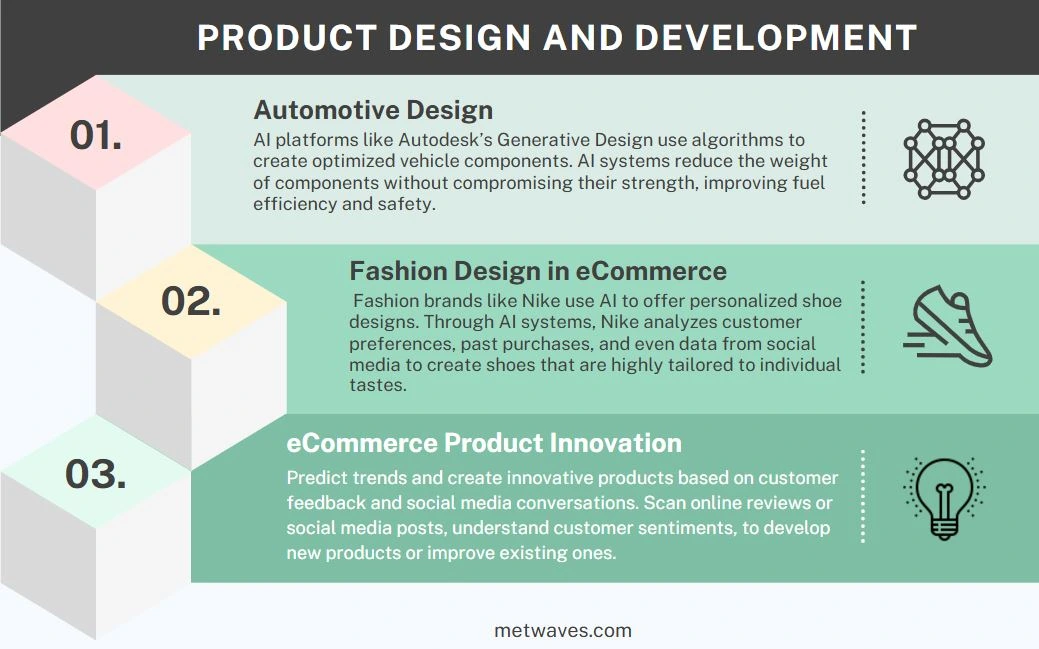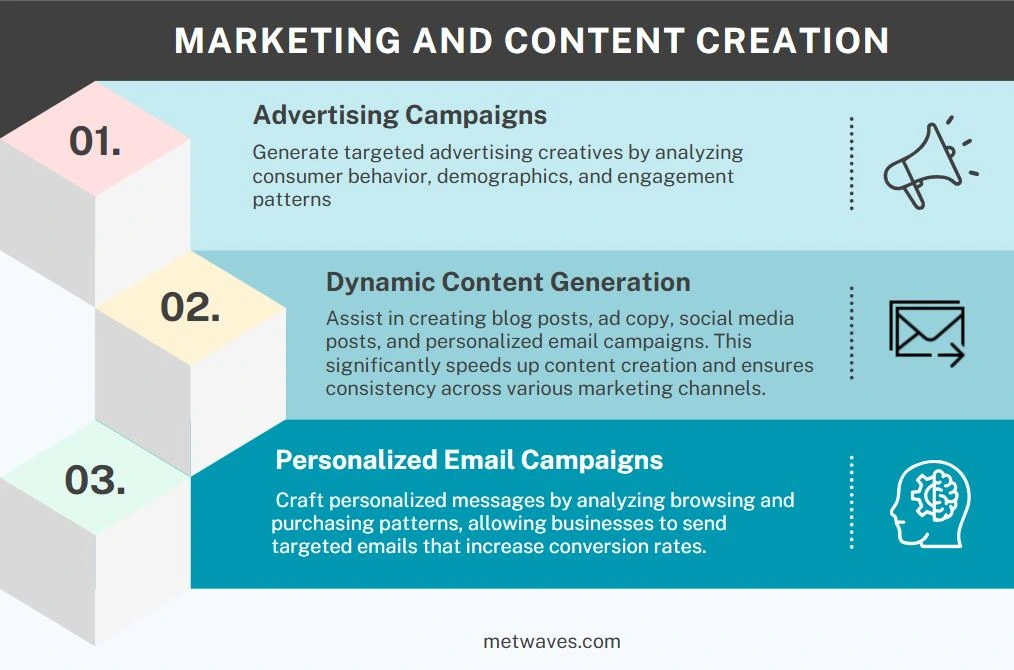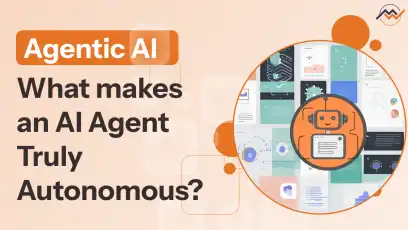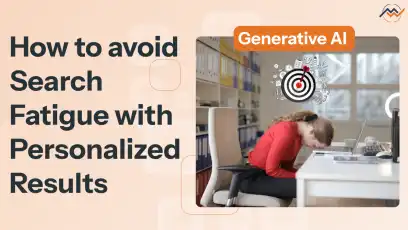In business, creativity is the engine that powers innovation, helps companies stay ahead, and solves tricky problems. It's like the secret ingredient that makes everything work—from coming up with killer products to solving those tricky problems that seem to pop up out of nowhere. and solve those “why didn’t we think of this sooner?” problems. But what if we told you there’s a new player in town that’s shaking things up? Presenting Agentic AI, the brilliant, decision-making robots that don’t need coffee breaks or brainstorming sessions to do their job. Think of Agentic AI as the brainy systems that can think, decide, and solve problems all on their own. No human help required—these AI-powered wonders are like the creative sidekick every business wishes they had.
Agentic AI is transforming industries by helping create amazing products and making operations run smoothly. But just how far can this AI go in unlocking creativity and tackling tough challenges? In this article, we’ll dive into its potential, real-world uses, and how businesses can tap into it to stay ahead in an ever-changing world.
Autonomous creativity is the ability of AI systems to come up with fresh ideas, designs, or solutions without needing a human to step in and guide the process. It’s like having an AI-powered artist or inventor working on its own. Unlike traditional AI, which simply follows a set of pre-programmed instructions, Agentic AI takes creativity to the next level by using cutting-edge technologies like machine learning, neural networks, and generative models.
In a nutshell, these technologies allow the AI to learn from vast amounts of data, spot patterns, and use this knowledge to produce outputs that are both original and functional. Think of it like training an AI to be a problem-solving genius that can draw from the collective knowledge of the internet, recognize trends, and create new concepts—all without being told exactly what to do.
For example, generative models—like those used in art creation or design—allow AI to generate visual art, product prototypes, or even marketing copy by understanding and mimicking human creativity. Meanwhile, neural networks enable the AI to adapt and improve over time, learning from mistakes and enhancing its creative output with each iteration. This makes Agentic AI not just a tool, but a true creative partner that can enhance innovation in ways that were previously thought to be reserved for human minds alone.
Why does it matter for Businesses?
So, why should businesses care about autonomous creativity in Agentic AI? The short answer: because it’s a game-changer.
In a world where innovation is a key driver of success, businesses need to continuously come up with fresh ideas, optimize their products, and solve complex challenges—often faster and more efficiently than ever before. Agentic AI gives companies the ability to do just that by providing them with an always-on, creative powerhouse.
For businesses, this means:
Faster Time to Market: AI-driven design tools rapidly create prototypes and iterate solutions.
Enhanced Problem Solving: Complex challenges, such as supply chain inefficiencies, can be addressed with fresh AI-driven insights.
New Revenue Streams: AI can unlock opportunities by creating entirely new products or services.
Agentic AI is transforming product design by offering businesses unparalleled tools to innovate efficiently and effectively. Unlike traditional methods that rely heavily on manual analysis or static data, Agentic AI leverages advanced technologies like machine learning, generative algorithms, and neural networks to process vast amounts of information in real time. This enables businesses to identify emerging trends, understand nuanced customer preferences, and evaluate material properties with incredible precision.

- In the automotive industry, AI-driven tools like Autodesk’s Generative Design help manufacturers develop lighter, stronger vehicle components, enhancing fuel efficiency and safety. For instance, Tesla uses AI to design energy-efficient vehicle parts.
- In eCommerce and fashion, brands like Nike harness AI to personalize products based on customer data and social media insights. Programs like Nike By You allow customers to design their own shoes, blending style and individuality seamlessly.
- AI also supports eCommerce innovation by analyzing online reviews and social media to understand customer needs. These insights help businesses create new products or refine existing ones, staying ahead of trends and meeting evolving demands.

- Advertising Campaigns: AI systems can generate targeted advertising creatives by analyzing consumer behavior, demographics, and engagement patterns. This reduces the guesswork in marketing strategies.
E.g. eCommerce Shopify uses AI to help merchants automate ad campaigns by analyzing customer data and creating personalized ads across social media platforms like Facebook or Instagram, driving higher engagement. - Dynamic Content Generation: Platforms like ChatGPT assist in creating blog posts, ad copy, social media posts, and personalized email campaigns. This significantly speeds up content creation and ensures consistency across various marketing channels.
For e.g. An LMS like Coursera can use AI to automatically generate content for promotional emails or personalized course recommendations based on user behavior, improving engagement. - Personalized Email Campaigns in eCommerce, AI can help craft personalized messages by analyzing browsing and purchasing patterns, allowing businesses to send targeted emails that increase conversion rates. For e.g. Amazon uses AI to send tailored product recommendations to users based on past purchases, browsing history, and wishlists, boosting sales and customer retention.

- Supply Chain Optimization, AI systems like IBM Watson help businesses optimize their supply chains by identifying bottlenecks, suggesting alternate routes, and predicting potential disruptions such as strikes or natural disasters. E.g. Walmart uses AI to forecast product demand, enabling its supply chain to adjust in real-time, ensuring product availability across its vast network of stores and online platforms.
- Sustainability Initiatives: AI can help businesses design energy-efficient processes and reduce waste by analyzing data from manufacturing, shipping, and supply chain operations. For e.g: Companies like Patagonia are using AI to develop sustainable clothing lines, optimize material usage and minimize environmental impact by using AI-driven design tools.
Agentic AI’s ability to process and analyze massive datasets enables businesses to uncover hidden patterns that lead to actionable insights and smarter decisions.
Retailers like Zalando use AI to analyze customer browsing behavior and purchase patterns. This allows them to predict future trends and recommend the right products to customers, increasing sales and engagement. LMS platforms like Udacity can track student progress and learning patterns, enabling AI to suggest courses or content tailored to individual learning styles, improving completion rates and learning outcomes.
Generative design tools let businesses explore countless design possibilities, significantly reducing research and development timelines.
Online jewelry brands like Tiffany & Co. may use AI-powered generative design tools to rapidly prototype new designs based on customer preferences and sales data. This ensures that new collections are aligned with what customers are looking for.
AI can help create adaptive learning paths in LMS platforms, designing personalized coursework for each learner based on real-time data. This approach ensures that each student’s unique needs are met more efficiently.
Agentic AI enables businesses to conduct rapid simulations and tests to refine their ideas before implementation, accelerating the innovation cycle.
Amazon uses AI to run simulations on different website layouts, pricing strategies, and promotional offers. The AI tests these variations to determine which results in the highest conversion rates. An LMS platform can use AI to conduct experiments on different teaching methodologies or course formats, analyzing student engagement and retention to find the most effective strategies.
- Streamlined Processes: Automating creative and problem-solving tasks reduces the need for manual labor and increases efficiency. In eCommerce, AI can automate content creation, while in LMS, AI-driven feedback mechanisms cut down on the time educators spend grading
- Efficient Prototyping: AI helps businesses minimize the cost of physical prototyping by simulating product scenarios and designs digitally. This results in quicker iterations and reduced production costs. Example: L’Oreal uses AI to digitally simulate makeup products on models to test new looks without producing physical samples.
-
New Market Opportunities: AI can identify emerging trends, gaps in the market, and underserved customer needs, providing businesses with new opportunities for revenue growth.
For e.g. Shopify merchants use AI tools to identify trending products and gaps in the market, allowing them to introduce new items to meet emerging demand. -
Personalized Offerings: Agentic AI creates tailored products or services, boosting customer satisfaction and loyalty. Personalized recommendations in eCommerce or customized learning paths in LMS can drive higher conversion rates and retention. For e.g. Netflix uses AI to recommend movies based on user viewing history, keeping users engaged and increasing subscription retention.
Businesses that adopt Agentic AI gain a competitive edge by being able to deliver novel solutions faster than their competitors, providing innovative products and personalized services.
For e.g. Duolingo uses AI to offer highly personalized language learning experiences, setting it apart from traditional language courses and increasing its user base.
While Agentic AI can generate creative outputs independently, businesses must ensure that the results align with their brand values, target audience, and business goals.
For e.g. In eCommerce, AI-generated designs or product ideas should resonate with a brand’s identity and customer expectations. A clothing brand wouldn’t want AI to create designs that stray too far from its established style.
As AI systems generate new content or solutions, determining who owns the rights to those creations becomes a complex legal issue. Businesses need to clarify intellectual property rights to avoid conflicts in the future. If an AI-generated product design leads to a breakthrough, companies must decide who owns the rights—whether it’s the business, the AI platform provider, or the individual who trained the AI.
Conclusion
Agentic AI is revolutionizing product design and innovation by enabling businesses to analyze trends, understand customer preferences, and optimize materials with precision. From automotive advancements to personalized fashion and eCommerce innovation, these AI-driven systems empower companies to deliver superior products faster. By leveraging data and generative tools, businesses can stay ahead of market demands, refine existing offerings, and create new ones, driving growth and customer satisfaction.
Takeaway Conclusion
Agentic AI isn’t just a tool; it’s a game-changer for modern businesses. Whether it's crafting lightweight vehicle components, tailoring fashion to individual tastes, or predicting the next big trend in eCommerce, AI equips companies with the ability to innovate efficiently. The future belongs to those who embrace this technology thoughtfully, aligning it with customer needs and ethical standards, to deliver value and stay competitive in a rapidly evolving marketplace.




